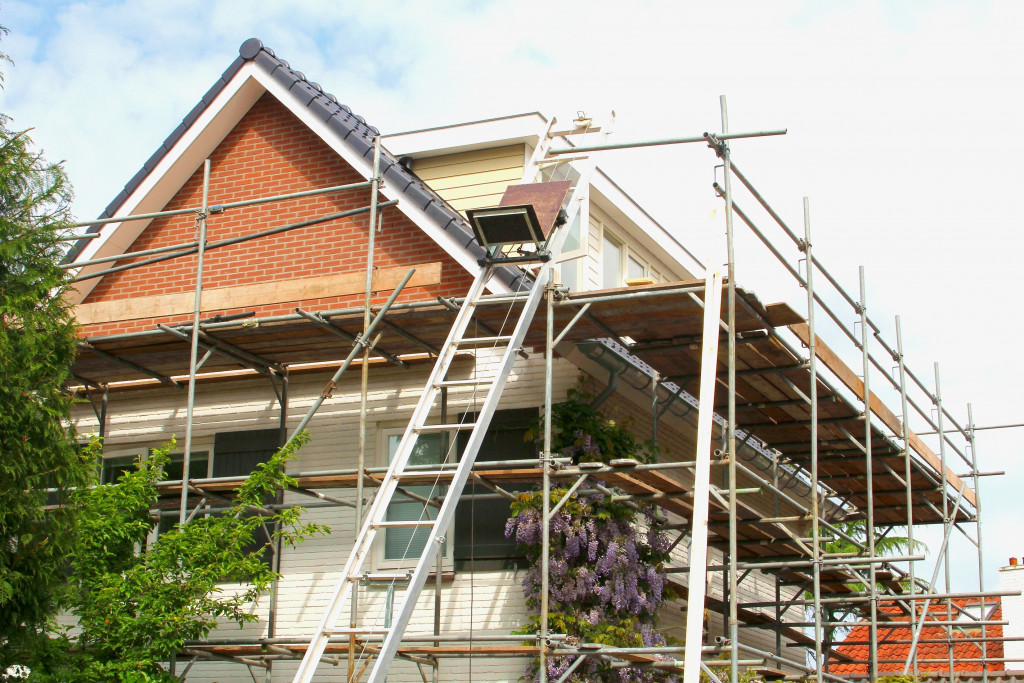- Get a professional home inspection before buying an older house to identify potential safety issues.
- Address any structural issues, from foundation problems to roofing repairs, to ensure your family’s safety.
- Check for lead-based paint and asbestos and have them removed or covered up if necessary.
- Upgrade outdated electrical systems, outlets, wiring, fuse boxes, and switches to meet current safety standards.
- If asbestos is present, hire a professional to handle the removal, as it is a dangerous and complicated process.
Buying an older house can be an excellent investment. The charm and character that come with older homes are often worth it. However, before moving in, it’s essential to ensure the property’s structure is safe. Older houses often have unique challenges like outdated electrical systems, asbestos, and lead-based paint. This blog post will discuss how homeowners can ensure a safe structure before moving into an older house.
1. Get a Home Inspection
Before buying an older home, always have it inspected by a professional home inspector. A home inspector will evaluate the property’s overall condition and identify potential safety issues. They will check for structural problems, lead-based paint, asbestos, and outdated electrical systems. A home inspection report will give you an insight into what needs to be addressed before moving in. Working with a reputable and experienced home inspector is essential to ensure the inspection is thorough and accurate.

2. Address Structural Issues
Older homes may have structural issues that must be addressed before moving in. Some common structural problems include foundation issues, leaks, and termite damage. These issues can cause safety hazards and must be addressed before moving in.
One of the essential areas to check is your roofing. Older roofing systems often require repairs, but some will need replacements. Working with expert roof replacement technicians can help ensure that your roof is safe to move into. They will inspect your roof and identify any issues that need to be addressed.
3. Check for Lead-Based Paint
If the house had been built before 1978, it might have lead-based paint. Lead-based paint is dangerous, especially to young children, and can lead to lead poisoning. Before moving in, it’s essential to check for lead-based paint and, if necessary, have it removed or covered up. A certified lead abatement contractor can safely remove lead-based paint from the house.
Never attempt to remove lead-based paint by yourself. It’s highly toxic and must be handled only by experienced professionals. Lead must be removed or covered up before moving in if it is found.
4. Upgrade Electrical Systems
Older homes may have outdated electrical systems that pose a safety risk. Before moving in, it’s essential to have an electrician evaluate the electrical system and make any necessary upgrades. An outdated electrical system can lead to electrical fires, electrical shocks, and other safety hazards. Here are some areas to pay special attention to:
a. Outlets
Make sure the outlets are rated for the current electrical system. Some older outlets may not be suitable for the existing electrical system and must be replaced.
b. Wiring
Check your home’s wiring to ensure it is up to date and meets current safety standards. Broken or outdated wiring must be replaced to avoid safety hazards.

c. Fuse Boxes
If your home has an older fuse box, it must be replaced before moving in. An outdated fuse box can cause electrical fires and must be replaced with a newer, safer model. You should also have circuit breakers installed to help protect against electrical fires.
d. Switches
Even older switches can be a safety hazard. If the house has outdated or malfunctioning switches, you should have them upgraded or replaced before moving in.
5. Check for Asbestos
Asbestos is another common problem in older homes. Asbestos was used in construction materials, such as insulation and flooring, until the 1980s. If your house was built before 1980, there is a chance it may contain asbestos. Asbestos is dangerous when disturbed and can cause lung cancer and other health problems.
If you suspect asbestos in your home, it’s essential to have it tested and, if necessary, remove it. Professionals should be hired to handle asbestos removal as it is dangerous and complicated. Some older homes may have asbestos-containing materials that are undisturbed and safe. However, it’s best to have it tested to make sure.
Buying an older house can be an excellent investment, but ensuring that the structure is safe before moving in is essential. As a homeowner, addressing safety concerns before moving in can save money, time, and potential safety hazards. Work with a professional home inspector, electrician, and structural engineer to identify and address safety concerns. By taking these steps, you can ensure you and your family enjoy a safe and comfortable home for years.

